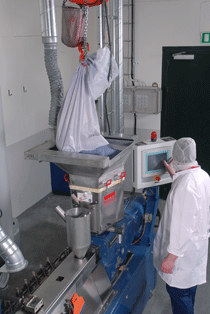Medical packaging: “It’s all about compliance”
Innovation, long the engine driving the plastics industry's expansion into new fields, is being stymied in the medical packaging market by new ISO regulation 11607-1-2006, which has in the past 18 months vastly increased the fear of the unknown (new material/additive/process) among processors serving the market. The ISO reg was mentioned in multiple conversations as a hindrance to innovation—or at least a governor on the speed at which innovation is adopted—within the medical packaging market.
March 25, 2010
Innovation, long the engine driving the plastics industry's expansion into new fields, is being stymied in the medical packaging market by new ISO regulation 11607-1-2006, which has in the past 18 months vastly increased the fear of the unknown (new material/additive/process) among processors serving the market. The ISO reg was mentioned in multiple conversations as a hindrance to innovation—or at least a governor on the speed at which innovation is adopted—within the medical packaging market.
|
Shown: medical masterbatch extrusion at Clariant. |
The ISO reg "forces a much more disciplined approach to documenting the performance of packaging," explained Marcelo Milani, marketing manager for DuPont's medical and pharmaceutical protection business. "It's all about compliance." Specifically, the standard "specifies the requirements and test methods for materials, preformed sterile barrier systems, sterile barrier systems and packaging systems that are intended to maintain sterility of terminally sterilized medical devices until the point of use," according to the ISO website, which sells the standard for CHF112 (about $105).
Medical device manufacturers have faced such rules for years but now the processors of medical packaging also do, he explained, with the ISO reg mandatory for these in Europe and now Japan. Though not yet mandatory there, the U.S. Food & Drug Administration (FDA) accepts and looks fondly on the new ISO reg, and China's government is considering implementing it for its fast-growing medical industry as well.
As a result of the stricter standards for testing, "the funny thing is that people don't always want innovation," noted Milani. They instead often want a material that's tried and tested and about which everything is known, he said. For some smaller processors, the tougher tests have forced cancellation of projects for which volumes were not high enough to justify the expense of testing, he said.
Stephen Duckworth, head of the global market segment, consumer goods & medical, at in the masterbatch business unit at supplier Clariant (Muttenz, Switzerland), says that about 18 months ago his company started fielding more questions from its customers, who themselves were being asked more questions by the FDA that went beyond the data included on materials' drug master files. "There's really been an exponential growth in this questioning," he said. "The FDA increasingly is looking at the entire supply chain." As a result, his company, like most other major plastics and additives suppliers, is starting to handle its medical business much differently than it has in the past.
Duckworth gave the example of a masterbatch his firm supplies which it tested and found a slight difference in one lot. Turns out, the supplier of a material used in the slip agent had switched to a new grade of wax, no different in its properties but still different enough to register on the extreme tests Clariant now does.
"We understood very clearly [from the stricter regulatory environment] that we need to have no change in our processes at all," he said. That has led Clariant's masterbatch business to concentrate its medical masterbatch production at three facilities, one each in the U.S., Sweden, and Singapore, with each center of competence devoted solely to medical. It has worked with its own suppliers so that it is able to offer some medical masterbatch grades globally and guarantee that, no matter where sourced, these grades will have exactly the same resin, colorant, and any other additive. "We really understand risk management" is how Duckworth describes the firm's new face to the medical packaging market.
Although he admits the changes were a lot of work, Duckworth said he expects his employer to consequently reap benefits not only in packaging, but also in other markets such as toys and even textiles, as stricter regulations for documenting and testing of materials and processes also take hold in each of these. —Matt Defosse
About the Author(s)
You May Also Like



